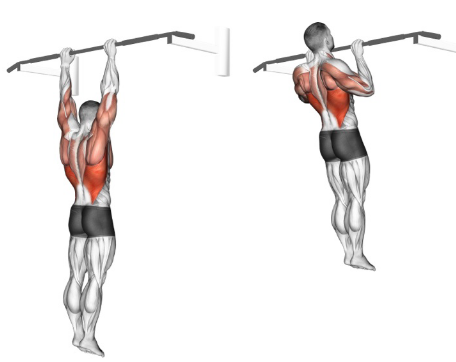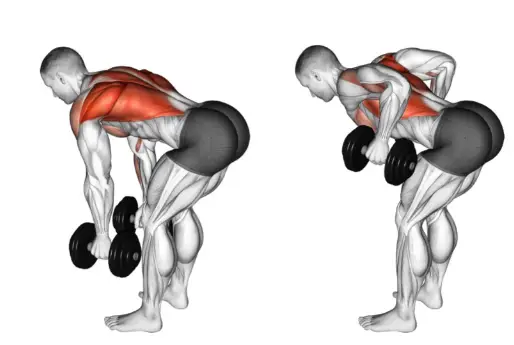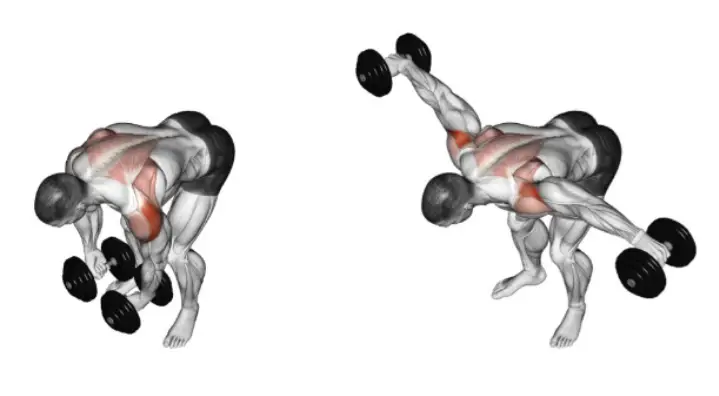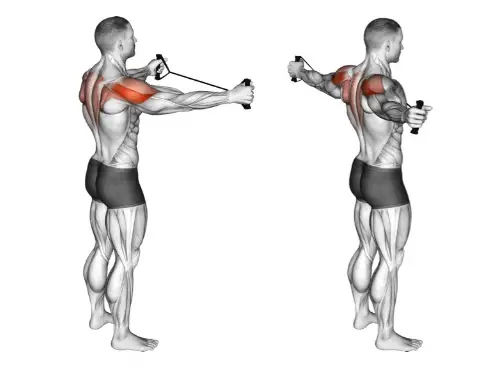Welcome to the world of home exercises, where you may achieve your fitness objectives without ever setting foot inside a gym. You may improve your upper body strength, muscular tone, and posture by performing a pull day at home. This post will discuss the top pull day at home exercises you can perform, as well as tips on how to get the maximum results and avoid common mistakes.
Introduction to Pull Day Exercises
Pull day exercises mostly work the arms, shoulders, and back muscles. They involve lifting weight in the direction of your body, such when you lift dumbbells or resistance bands or your own body weight. These exercises are important for building a healthy body and preventing muscular imbalances that raise the possibility of injury.
Benefits of Pull Day Exercises
Improved Upper Body Strength
Exercises for pull day at home strengthen the muscles in your upper body, including your shoulders, biceps, and back. This improved strength improves both your physical performance and your total functional fitness.
Balanced Muscle Development
By including pull day exercises into your workout routine, you ensure that both your pushing and pulling muscles are equally developed. This balance is essential for maintaining proper posture and preventing injuries.
Injury Prevention
Pull day exercises lower your chance of shoulder injury and back discomfort by strengthening the muscles that support your shoulders and spine. Additionally, you may reduce the risk of overuse injuries by focusing on good form and technique.
Setting Up for Pull Day at Home
Make sure you have the right tools and a suitable place for exercise before starting your pull day at home routine.
Required Equipment
- Pull-Up Bar
- Dumbbells or Resistance Bands
- Exercise Mat (Optional)
Creating a Suitable Space
Designate an area in your home where you have enough room to perform the exercises comfortably. Make sure the space is free from clutter and has adequate ventilation.
Top 5 Pull Day Exercises to Do at Home
Pull-Ups
Pull-ups are one of the finest exercises for building upper body strength. They target the muscles in your back, arms, and shoulders, making them a cornerstone of any pull day routine.

To perform a pull-up:
- Grab the pull-up bar with an overhand grip, somewhat wider than shoulder width apart.
- Hang with your arms fully extended and your core engaged.
- Raise your chin up above the bar by pulling yourself up.
- Lower yourself back down with control.
Bent Over Rows
Bent over rows work your shoulders, biceps, and back muscles simultaneously. This exercise improves the muscles used in pulling motions and helps with posture.

To perform bent over rows:
- Position yourself with a dumbbell in each hand and your feet shoulder-width apart.
- Maintaining a flat back, hinge at the hips and slightly bend your knees.
- Pull the dumbbells towards your ribcage, squeezing your shoulder blades together at the top.
- Gradually return the weights to their initial places.
Reverse Flyes
Reverse flyes assist to enhance posture and shoulder stability by focusing on the muscles in your upper back and shoulders.

To perform reverse flyes:
- Maintain a shoulder-width distance between your feet while holding a dumbbell in each hand.
- Hinge at the hips and bend your knees slightly, maintaining a slight bend in your elbows.
- When your arms are parallel to the floor, raise the dumbbells to the sides.
- Lower the weights back down with control.
Bicep Curls
Bicep curls work the muscles in your forearms and shoulders in addition to your biceps.

To perform bicep curls:
- Stand with your feet hip-width apart, holding a dumbbell in each hand with your arms extended by your sides.
- Keeping your elbows close to your body, curl the weights towards your shoulders.
- When the exercise reaches its peak, squeeze your biceps.
- Lower the weights to get back to the starting position.
Resistance Band Pull-Aparts
Resistance band pull-aparts are a great way to increase shoulder mobility and develop your upper back and shoulder muscles.

To perform resistance band pull-aparts:
- Hold a resistance band in front of you with your arms extended at shoulder height.
- Press your shoulder blades together to pull the band apart.
- Return gradually to the beginning position while keeping the band tight.
How to Perform Each Exercise Correctly
Pull-Ups Technique
Lower yourself until your arms are completely stretched at the bottom of the exercise to ensure a full range of motion. Instead of swinging or relying on momentum to finish the exercise, concentrate on using your back muscles.
Bent Over Rows Form
Throughout the exercise, keep your spine neutral and try not to round your back. As you draw the weights towards you, keep your elbows close to your body, and at the peak of the movement, press your shoulder blades together.
Reverse Flyes Execution
Take control of the motion and avoid swinging the weights with momentum. As you move the weights out to the sides, maintain a tiny bend in your elbows and concentrate on pressing your shoulder blades together.
Proper Bicep Curls
Avoid swinging or lifting the weights with momentum. Just move your forearms; keep your elbows stable and concentrate on bicep contractions throughout.
Technique for Resistance Band Pull-Aparts
Maintain tension in the resistance band throughout the exercise, and concentrate on pushing your shoulder blades together while pulling the band apart. Maintain your arms straight and avoid shrugging your shoulders.
Tips for Maximizing Results
Warm-Up Before the Workout
Before your pull day at home workout, give your muscles and joints a dynamic warm-up to assist them get ready for the movements, which lowers the chance of injury.
Focus on Form Over Reps
Prioritize good form and technique above the amount of reps you can do. Maintaining proper form during exercise maximizes muscle activation and reduces injury risk.
Gradually Increase Intensity
By progressively increasing the weight or resistance utilized in your pull day at home workouts, you may gradually overload your muscles. Over time, this gradual increase promotes strength and muscular growth.
Include Variations
Include a variety of pull day at home exercise modifications in your workouts to keep things interesting and avoid plateaus. To target your muscles from different angles, try experimenting with different grips, angles, and equipment.
Sample Pull Day Workout Routine
Here’s a sample pull day at home workout routine you can try at home:
- Warm-Up:
- Arm Circles: 2 sets of 10 reps (both directions)
- Shoulder Shrugs: 2 sets of 10 reps
- Pull-Ups: 3 sets of 8-10 reps
- Bent Over Rows: 3 sets of 12-15 reps
- Reverse Flyes: 3 sets of 12-15 reps
- Bicep Curls: 3 sets of 10-12 reps
- Resistance Band Pull-Aparts: 3 sets of 15-20 reps
Common Mistakes to Avoid
Neglecting Warm-Up
Exercise performance suffers and injury risk rises when the warm-up is skipped. Before starting your pull day at home routine, always give your muscles enough time to warm up.
Using Incorrect Form
Exercises performed incorrectly not only decrease in effectiveness but also raise the possibility of damage. Pay close attention to keeping your form correct for every action.
Overtraining
Allowing your muscles enough rest between sessions can help you avoid overtraining. Fatigue, reduced performance, and a higher chance of injury can result from overtraining.
Importance of Rest and Recovery
Any fitness routine, including pull day at home training, must include time for recovery and rest. For best results and injury avoidance, give your muscles time to recover and regenerate after intense workouts.
Muscle Repair and Growth
During rest intervals, your muscles mend small rips caused during training, resulting in muscular development and enhanced strength over time.
Preventing Burnout and Injury
Burnout, a decline in motivation, and a greater chance of injury can result from overtraining and insufficient recovery. By including rest days into your workout routine, you enable your body to properly recover and function at peak efficiency.
Tracking Progress and Setting Goals
Keep a record of your workouts and make sure you reach your goals so you can monitor your development. Having specific goals helps you stay motivated and focused on your fitness path, whether it’s lifting bigger weights or increasing the number of pull-ups you can do.
Conclusion
Adding pull day at home exercises to your workout routine is a great method to strengthen your upper body, correct your posture, and prevent injuries. You may maximize your results and reach your fitness objectives from the comfort of your own home by using proper form and technique, increasing intensity gradually, and allowing for enough time to recover and rest.
FAQs
Q. Can beginners do pull day exercises at home?
Yes, beginners can start with modified versions of pull day at home exercises and gradually progress as they build strength and confidence.
Q. Do I need a pull-up bar to do pull day at home workouts?
While a pull-up bar is ideal for certain exercises, there are alternative options such as resistance bands or bodyweight rows that can be done without one.
Q. How often should I do pull day at home workouts?
Aim to include pull day at home workouts into your routine 2-3 times per week, with rest days in between to allow for muscle recovery.
Q. What if I can’t do a full pull-up?
Start with assisted pull-up variations or negative pull-ups to build strength gradually until you can perform a full pull-up.
Q. Can pull day at home exercises help with back pain?
Strengthening the muscles in your back through pull day at home exercises can help in reducing back pain and improve overall spinal health over time.

